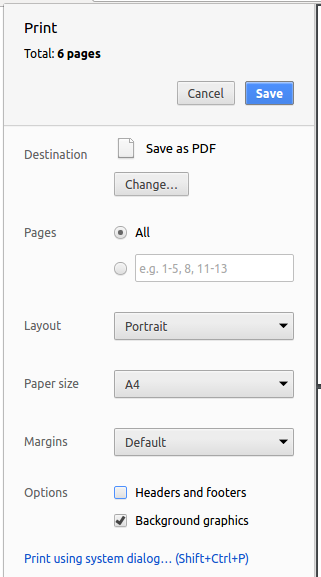repl.it linkWeek 1 [Aug 12] - Tasks
Tasks you need to do in the week will appear in this tab.
- Install Java before the lecture
- Create a GitHub account
- Submit the pre-module survey by Saturday 2359
- Attend the lecture
- Submit weekly exercises
0 Learn about the module and the website
Relevant: [

TIC2002 Introduction to Software Engineering contains roughly a 50-50 balance of theory and practice of SE. It covers the knowledge/skills necessary to do small software projects, and as such, it is a first step towards preparing you to work in bigger SE projects, which will be done in later modules.
Relevant: [
The Schedule page is your main source of information for TIC2002. You will need to refer to it weekly. For an overview of the full schedule, refer to the Full Timeline page.
More details for the upcoming weeks will be added as the weeks progress. In general, information given for more than 1 week into the future should be treated as tentative.
Browser Compatibility
Most of this will work on most mainstream Browsers, but embedded slides are best viewed using Chrome.
Information Layers
This book tries to layer information so that readers can decide to omit less important layers if they wish to.
More important information are in bold or highlighted while less important information are dimmed or in collapsed panels such as the below.
Less important info
Less important info
Less important info
Tabs indicate alternative formats of the same content (e.g. video vs text). You can choose the one you like and ignore the other tabs.
Some textual description of X
Video describing X
Dotted underlines indicate
This website uses a star rating system to indicate the priority level of contents.
Relevant: [
Star Rating System
We use a star rating system indicate the importance of module components. Start with things that are rated one-star and progress to things with more stars. Things rated four stars are optional.
Star ratings for topics (and textbook sections):
-
One-star topics : The topics you need to achieve just to keep up with the module. We recommend you to achieve these topics if you want to pass the module (i.e. up to a C grade).
-
Two-stars topics : Can get you up to a B+.
-
Three-stars topics : Can get you up to an A+.
-
Four-stars topics : Optional. Not examinable. For your own knowledge.
-
topics marked with two icons e.g., : , : , : , : are relevant topics you are expected have achieved in prerequisite modules. They are given for reference only. The number of stars indicate the progression of topics, similar to the star rating system above i.e., one-star prerequisite topics are the most basic and the most important. four-star pre-requisite topics can be ignored without affecting CAP.
Conventions Used
Shorthand Headings
Meaning of some shortened headings:
-
What : the meaning of the concept in concern
-
Why : the motivation behind the concept in concern
-
How : the usage of the concept in concern
-
When : the pros and cons of the concept in concern, when to use the concept
Boxed-Text Styles
Meaning of Icons
extra : tangential info, can be ignored if not interested
: direct link to the LO. Ctrl+Click to open the LO in new window/tab.
: learning outcomes
: prerequisite learning outcome
: examples
: resources
: exercises
: printable version
: preview/more info
: video
: textual description
: slides
: output produced by running code
question without answer
question with answer
: tasks to do
: lecture
: tutorial
: evidence you can use to prove you have achieved a learning outcome
⏰ : deadline
Searching for keywords
Use the search box in the top navigation bar to search for keywords in the website pages. If you cannot find the content related to a keyword, let us know by posting in the forum so that we can add the missing keyword to our search index.
Saving as PDF Files
-
Use Chrome to load the page you want to save as pdf.
-
Click on the
Printoption in Chrome’s menu. -
Set the destination to
Save as PDF, then clickSaveto save a copy of the file in PDF format. For best results, use the settings indicated in the screenshot below.

Printing Textbook Content
Printer-friendly version (indicated by icon) have been provided for each chapter and the whole book. You can use them for saving as pdf files or printing.
Making this Website Better
This website was generated using the MarkBind software developed at NUS. We welcome bug reports, suggestions, and contributions, to be submitted at the website issue tracker.
1 Install Java before the lecture
- See the panel below:
Relevant: [
This module uses Java. It assumes you are familiar with C++ basics and provides lessons to help you transition from C++ to Java.
Install JDK 11 in your computer.
2 Create a GitHub account
- See the panel below:
Relevant: [
3 Submit the pre-module survey by Saturday 2359
- Submit the pre-module survey, available on LumiNUS
4 Attend the lecture
- There is no tutorial in this week. The lecture will start at 7.30pm.
Relevant: [
Tuesdays 7.30-9.30pm
SR2 (COM1-02-04)
Lectures will not be webcast as the venue does not have a webcast facility. Please bring your laptop to the lecture as you will need to be using it for the most part of the lecture.
Lecture slides are not suitable to be used as reference materials as they have been
If slides are not in LumiNUS by the expected times, please feel free to ping the lecturer.
5 Submit weekly exercises
- As you learn the weekly topics, submit Week 1 programming exercise on
repl.it. See the panel below for more info. More instructions about this will be provided during the lecture.
Relevant: [
In some weeks, there will be some programming exercises for you to submit (on Repl.it). You should do the exercises as you learn the topics. Focus on learning the topic rather than finishing the exercises. While these are exercises provided to self-test your knowledge, the more important thing is to read and understand the topic content. Furthermore, not all topics are tested by exercise.
Relevant: [repl.it
repl.it
We'll be using Repl.it for coding exercises (compulsory).
- Create an account on https://repl.it.
- Make sure you set your name correctly in your
repl.ituser profile (so that the prof can trace yourrepl.itsubmissions to you). - Join the
repl.itclassroomtic2002-2019using the link https://repl.it/classroom/invite/ciQ3DQs.
Relevant: [
If you face difficulties/doubts while learning the weekly topics, doing weekly exercises/tasks
- you can post in the module forum
- email prof at
damith[at]comp.nus.edu.sg - ask for prof's help during next week’s tutorial hour